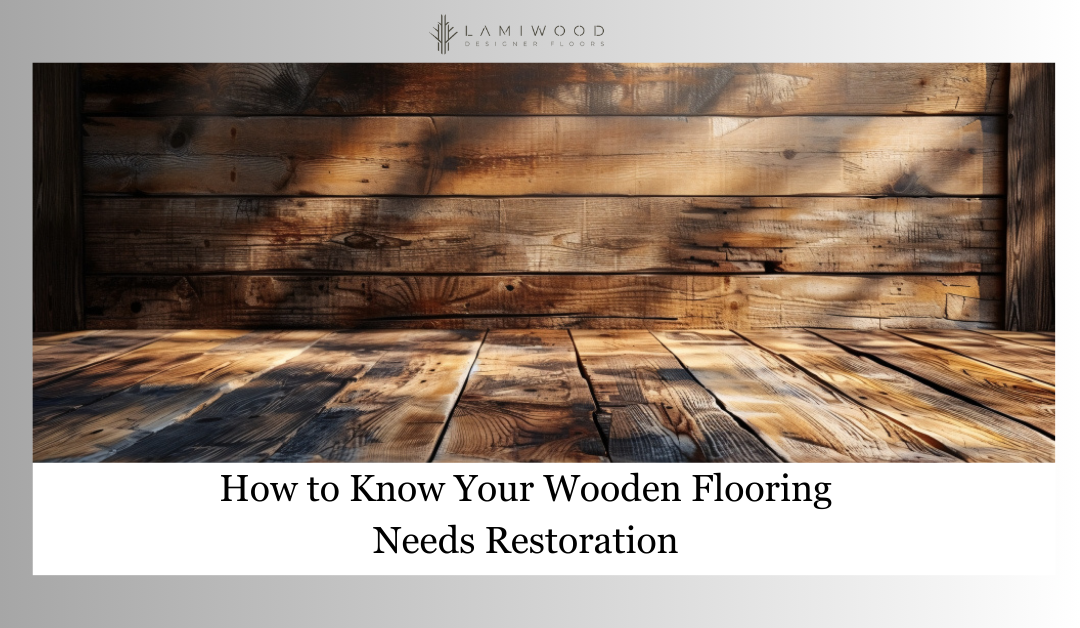Any area, whether it be an office or a house, benefits from the warmth, elegance, and richness that wooden flooring brings. However, over time, even the most well-maintained wooden floors can start to show signs of wear and tear. Understanding when your wooden flooring needs restoration is crucial to preserving its beauty and longevity.
From subtle indicators to more obvious red flags, understanding these signs can help you take timely action to preserve and enhance the beauty of your wooden floors.
Fading Color and Lack of Luster
One of the most noticeable signs that your wooden flooring needs restoration is a fading color and a lack of luster. Over time, exposure to sunlight, foot traffic, and cleaning agents can cause the protective finish on your wooden floors to wear off, leading to a dull appearance. If your wooden floors no longer have that rich, vibrant hue they once did, it’s a clear indication that they need attention.
Restoration Solution
Restoring the color and luster of your wooden floors typically involves sanding away the worn-out finish and applying a fresh coat of stain and sealant. Professional floor restoration services can expertly assess the condition of your floors and recommend the most suitable refinishing techniques to revive their beauty.
Scratches, Dents, and Gouges
Scratches, dents, and gouges are inevitable consequences of daily wear and tear on wooden floors. Whether caused by furniture movement, pet claws, or accidental impacts, these imperfections not only detract from the appearance of your floors but also compromise their integrity. If you notice an increasing number of scratches and dents across your wooden flooring, it’s a clear indication that restoration is in order.
Restoration Solution
Restoring wooden floors with scratches, dents, and gouges typically involves sanding down the damaged areas to even out the surface and then applying wood filler to fill in any gaps or depressions. Once the filler has dried, the floors are sanded again to achieve a smooth finish before applying a new protective sealant.
Warping, Cupping, or Buckling
Moisture is the nemesis of wooden flooring, capable of causing warping, cupping, or buckling if left unchecked. These issues often arise due to prolonged exposure to moisture from sources such as leaks, spills, or high humidity levels. If you notice unevenness or distortion in your wooden floors, it’s crucial to address the underlying moisture issue promptly to prevent further damage and the need for extensive restoration.
Restoration Solution
Addressing moisture-related issues in wooden flooring typically involves identifying and rectifying the source of moisture intrusion, whether it’s repairing leaks, improving ventilation, or using dehumidifiers. Once the moisture problem is resolved, professional restoration experts can assess the extent of the damage and employ techniques such as drying, sanding, and reinstallation to restore the affected areas.
Creaking or Squeaking Sounds
Creaking or squeaking sounds emanating from your wooden floors are not only annoying but also indicative of structural issues that warrant attention. These noises often result from loose floorboards, inadequate subfloor support, or gaps between the flooring and the subfloor. Ignoring these sounds can further deteriorate your wooden floors and compromise their stability.
Restoration Solution
Addressing creaking or squeaking sounds in wooden flooring involves identifying the underlying cause and implementing appropriate solutions. This may include securing loose floorboards, reinforcing the subfloor, or using lubricants to reduce friction between floor components. Professional restoration services can conduct a thorough assessment of your floors to pinpoint the source of the noise and implement effective remedies.
Signs of Mold or Mildew
The presence of mold or mildew on your wooden floors is unsightly and poses health risks to occupants, particularly those with respiratory issues. Mold and mildew thrive in damp, humid environments, making wooden flooring susceptible to infestation, especially in areas prone to moisture accumulation. If you notice dark patches, musty odors, or respiratory symptoms associated with mold exposure, it’s imperative to address the issue promptly.
Restoration Solution
Dealing with mold or mildew infestation in wooden flooring requires a multifaceted approach that involves addressing the underlying moisture problem, removing the fungal growth, and restoring the affected areas. Professional restoration specialists employ specialized techniques and equipment to safely and effectively eradicate mold and mildew from laminate flooring while minimizing the risk of reoccurrence.
Conclusion
Wooden flooring is a timeless investment that adds beauty, warmth, and value to any home or commercial space. However, maintaining the pristine condition of wooden floors requires proactive care and occasional restoration to address signs of wear and tear. By recognizing the telltale signs that your wooden flooring needs restoration and seeking professional assistance when necessary, you can prolong the lifespan of your floors and enjoy their timeless elegance for years to come.
Also, Read – Wooden Floors and Water Damage: Causes and Prevention

